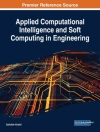Electronic devices and circuits are employed by a range of industries in unfriendly conditions, such as exposure to extreme temperatures, humidity, or radiation. This second edition describes the diverse measures needed to make electronics capable of coping with such situations and exploiting any new phenomena that take place under these specific conditions. The book explains the need for operating electronics beyond conventional limits in applications such as aerospace and automotive engineering. It explores Ga As, Si C, Ga N and diamond electronics, superconductive electronics, superconductor-based power delivery; moisture-proof, chemical-corrosion-resistant, radiation hardened and vibration-tolerant electronics; and also covers the prevention of electromagnetic interference, the operation of sensors in hostile conditions, and jamming and hacking mitigation techniques. The book provides up-to-date coverage of the topics for students, academics and industrial researchers as well as professional experts.
Key Features
- Provides comprehensive and practical coverage of electronic materials, devices, circuits, and systems in extreme temperature environments
- Presents design techniques for minimising the effects of exceedingly high or low temperatures on electronic devices
- Covers the influence of humidity, radiation, vibration and other deleterious factors on electronics
- Discusses the opportunities available to exploit new phenomena that take place under unfavourable thermal conditions
- Includes five new chapters in the second edition covering application-specific rugged electronics techniques
表中的内容
Part I Environmental hazards and extreme-temperature electronics Sub-part IA Environmental hazards
1 Environmental hazards
2 Operating electronics beyond conventional limits
Part I Environmental hazards and extreme-temperature electronics Sub-part IB Extreme-temperature electronics
3 Extreme-temperature electronics
4 Temperature dependence of the electrical characteristics of silicon bipolar devices and circuits
5 Temperature dependence of electrical characteristics of silicon MOS devices and circuits
6 The influence of temperature on the performance of silicon– germanium heterojunction bipolar transistors
7 The temperature-sustaining capability of gallium arsenide electronics
8 Silicon carbide electronics for hot environments
9 Gallium nitride electronics for very hot environments
10 Diamond electronics for ultra-hot environments
11 High-temperature passive components, interconnections and packaging
12 Superconductive electronics for ultra-cool environments
13 Superconductor-based microwave circuits operating at liquid-nitrogen temperatures
14 High-temperature superconductor-based power delivery
Part II Harsh-environment electronics Sub-part IIA General considerations
15 General considerations
16 Moisture and waterproof electronics
17 Preventing chemical corrosion in electronics
18 Radiation effects on electronics
19 Radiation-hardened electronics
20 Vibration-tolerant electronics
Part II Harsh-environment electronics Sub-part IIB Application-specific robust electronics techniques
21 Application-specific robust electronic techniques
22 Developing sensor capabilities for aggressive environments
23 Adapting medical implant electronics to human biological environments
24 Meeting the challenges faced by electronics in unfavorable space environments
25 Electronics jamming counteraction and cybersecurity assurance in adversary environments
关于作者
Vinod Kumar Khanna is a former Emeritus Scientist at CSIR-Central Electronics Engineering Research Institute, Pilani, India, and Emeritus Professor at the Academy of Scientific & Innovative Research, India. He is a retired Chief Scientist and Head of the MEMS & Microsensors Group, CSIR-CEERI, Pilani.












